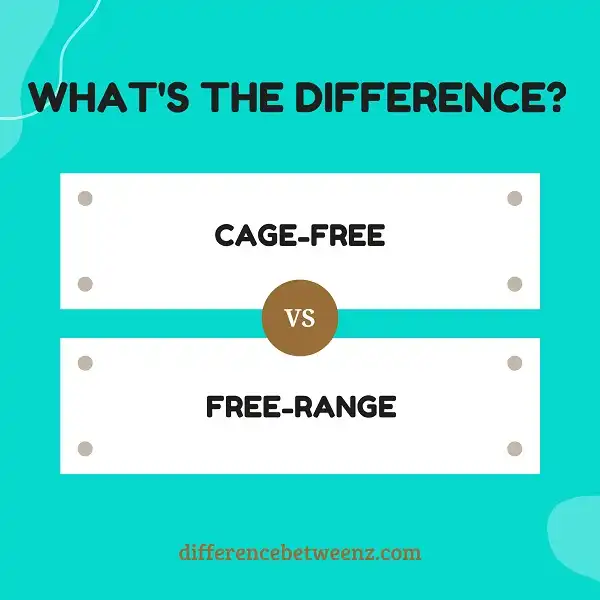Cage Free Vs Free Range
Difference between Cage Free and Free Range: –
A question that probably arises among people in society is what is the difference between Cage-Free and Free-Range?
To address this question, first, we need to know what is cage-free and what is free-range, and then we will be able to understand the difference between Cage-Free and Free-Range.
Difference between Cage-Free and Free-Range
Thanks to the increasing varieties of different products in the markets, the possibilities, and options, that customers can go with, have also increased. The concepts of organic and natural food gained popularity, the number of animal-based products and practices related to these products has also grown. One of the options that have grown exponentially, recently, is related to chickens, as one can easily find cage-free and free-range products, including eggs, available to consumers. Both of these terms may sound like, they explain the same thing, but it is a fact that there are a lot of differences between cage-free and free-range products.
Differences
Access To Back Yard
While both terms refer to a chicken’s ability to roam around at will in a free environment, but they can be still typically restrict to indoor space, whether it is in a barn or coop. One can find nest boxes within the open space that encourage those chickens to lay eggs.
Is cage-free and free-range the same thing?
Sometimes, in the cage-free environment, there could also be dust-bathing materials for the hens although these services depend upon the budget of the facility.
Free-range chickens can roam at their free will, although the amount of space is typically much larger.
Fortunately, they are can have access outdoors, thus allowing them natural dust-bath.
In addition, it brings about a more diverse diet as they can eat from the ground, and occasionally they may also eat small insects or grasshoppers.
Types Of Birds In Each Setting
Although, it is technically true that the breeding of different types of chickens is for meat and eggs.
Both free-range and cage-free, have certain choices that the facility may want to go with.
For example, outdoor access is a factor that is thought to greatly impact the quality of the meats that are eventually sent to the market for usage.
But the same thing doesn’t truly hold in the case of chickens that are meant for egg production.
Another option for egg production facilities, which is becoming increasingly attractive for consumers,
happens in a cage-free setting, as in this environment, the bird’s confinement is to solely indoors;
However, they are not held in cages and are allowed unrestricted movement.
This allows them a proper environment to lay eggs, but facilities overcrowding makes this claim debatable.
For Further Reading
Pricing factors
It is usually observed that the foods that are considered to be more natural and healthy are usually priced high.
The same goes with both, the cage-free and free-range eggs, so there are price dissimilarities between these two also.
Cage-free eggs are usually sold at the price of $3. 99 and is their final price.
This price goes even higher for free-range eggs, whose starting price for a dozen would be $3. 99 but may go as high as $8 a dozen.
Conclusion
Now I’m sure after reading these facts about Cage-Free and Range-Free, now you will be able to understand the difference between Cage-Free and Range-Free easily.
Now you must be clear about both the terms free-range and range free and this should also clear in your mind what is the difference between free-range and range free.
The above points are actually showing the very differences of range free and free-range, so that you could understand both of them very well.


